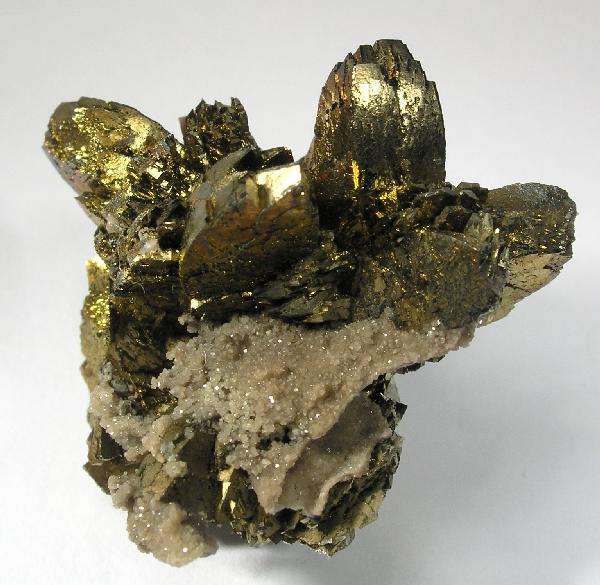Marcasite Value, Price, and Jewelry Information
Marcasite has a long history of use as a decorative and jewelry material. However, this brassy colored, metallic stone is quite brittle and seldom seen in modern jewelry.
1 Minute Read
Marcasite has a long history of use as a decorative and jewelry material. However, this brassy colored, metallic stone is quite brittle and seldom seen in modern jewelry.
Start an IGS Membership today
for full access to our price guide (updated monthly).Marcasite Value
Comments
Despite marcasite's relatively low hardness and distinct cleavage, many cultures have worked this material into objects of beauty. The Ancient Greeks made jewelry from marcasite. The Incas of South America polished large slabs of it as decorative objects. Gem cutters in the Victorian Era faceted this material into stones with flat backs. This popular style was known as the flattened-rose cut. Jewelry makers set them in white metal settings, such as rhodium-plated silver.
Nevertheless, much of the material found in these antique jewelry pieces is actually pyrite, a dimorph or polymorph of marcasite. These minerals share the same chemistry but have different crystal habits. (Pyrites have greater stability than marcasites for jewelry wear). For a time, they even shared the same name. Miners called common crystallized pyrite gemstones marcasites until the 19th century.
Identifying Characteristics
Marcasites leave a greenish black streak. However, never conduct a destructive streak test on a finished stone.
You may find steel imitations of this material. However, steel may be magnetic while marcasite is not.
Sources
This mineral is abundant and found throughout the world. Notable sources of gem material include:
- United States: Illinois; Kansas; Missouri; Oklahoma; Wisconsin.
- United Kingdom, England: in chalk deposits along the coast and at Folkestone.
- Austria; Bolivia; Czech Republic; France; Germany; Myanmar; Slovakia.
Stone Sizes
Massive material exists. Gem cutters can fashion cabochons of any desired size.
Care
Since marcasite can react to moisture and release sulfuric acid, store specimens in low humidity, below 60%, and separate from other pieces. Avoid inhaling dust when cutting this material and wash your hands after handling.
Marcasites are quite brittle. A sharp blow can easily crack a stone and loosen it in its setting. Because of its fragility and reaction to moisture, jewelry use is not recommended.
Joel E. Arem, Ph.D., FGA
Dr. Joel E. Arem has more than 60 years of experience in the world of gems and minerals. After obtaining his Ph.D. in Mineralogy from Harvard University, he has published numerous books that are still among the most widely used references and guidebooks on crystals, gems and minerals in the world.
Co-founder and President of numerous organizations, Dr. Arem has enjoyed a lifelong career in mineralogy and gemology. He has been a Smithsonian scientist and Curator, a consultant to many well-known companies and institutions, and a prolific author and speaker. Although his main activities have been as a gem cutter and dealer, his focus has always been education. joelarem.com
Related Articles
Black Diamond Value, Price, and Jewelry Information
Chameleon Diamond Value, Price, and Jewelry Information
Gray Diamond Value, Price, and Jewelry Information
Green Diamond Value, Price, and Jewelry Information
Latest Articles
Opal Buying Guide
Amethyst Sources Around the World: The Geological Story Behind These Purple Gemstones
Brazilianite Value, Price, and Jewelry Information
Ruby-Glass Composites vs Leaded Glass Clarity Enhancements
Never Stop Learning
When you join the IGS community, you get trusted diamond & gemstone information when you need it.
Get Gemology Insights
Get started with the International Gem Society’s free guide to gemstone identification. Join our weekly newsletter & get a free copy of the Gem ID Checklist!
